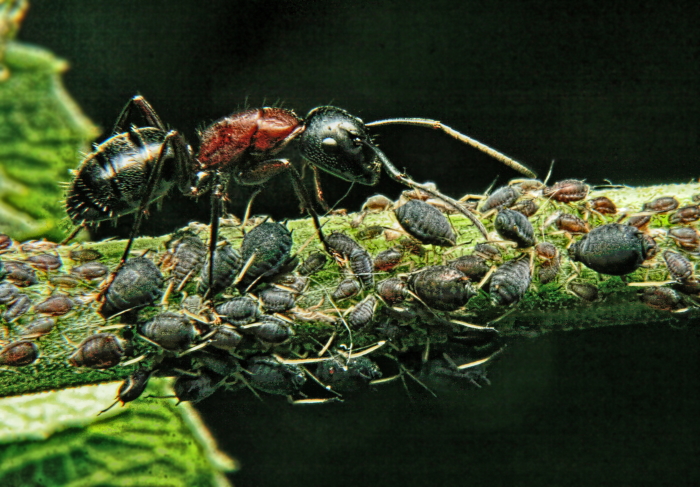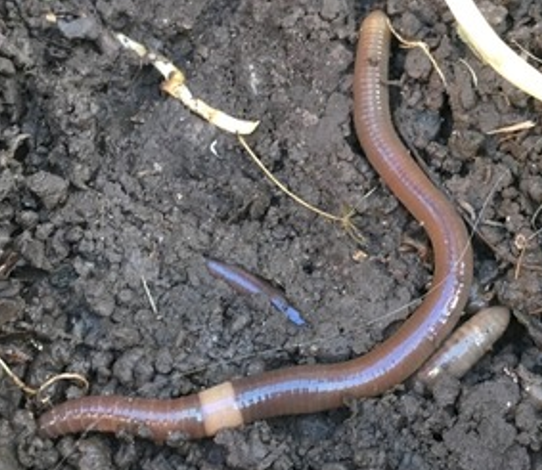By Pamela Doan
When I asked Current readers recently to share their gardening questions, I received so many responses I won’t be able to answer them all in one column. So I decided to group them by theme. This month we’ll discuss landscape pests.
Q: We’ve had aphids in our squash plants two years in a row. Is there something to be done to the soil during the fall and winter months to kill their eggs? They don’t seem to affect the tomato.
A: Assuming you have a correct ID on the pest (if unsure, contact a resource such as the county Cornell Cooperative Extension office), aphid eggs are more commonly found in the winter on stone fruit and roses, depending on the species.

To prevent pathogens or other pests, don’t leave the damaged plants in the garden. Next spring, there are strategies that may help you manage. First, plant the squash in a different area. Apply row covers to protect plants from insects. Check frequently for signs of infestations and ants, which usually signal aphids. Use a heavy spray of water to knock aphids off or prune out infested sections.
Another great defense is ladybug beetles. They love to eat aphids. Projects like LostLadybug.org will mail you New York-native, nine-spotted ladybug larva to set loose. While they protect your harvest, you’ll help repopulate an insect that nearly went extinct.

Q: Who ate that plant in the photo that The Current posted on Instagram [at right]? The same thing happened to my gooseberry, but every other plant is fine.
A: The photo shows a kale plant after it was eaten by a deer. But the gooseberry sawfly can defoliate a gooseberry plant very quickly.
Q: Have you heard anything about organic mulch contributing to the Asian jumping worm problem?
A: I haven’t seen any research focused on a link. While all earthworms found in Northeast forests were introduced (the native ones died off in an ice age), the Asian jumping worm has been troublesome because it reproduces faster than others and is a voracious eater of leaf litter. If you notice your mulch disappearing faster than usual or spot soil that looks like coffee grounds, it could indicate Asian jumping worms.

The good news is that earthworms don’t move quickly, and you can prevent their spread by not sharing soil. While many gardeners love to trade plants, wash off the soil before transfer and transplant to avoid spreading worms or eggs. The same goes for plants purchased at sales and landscape centers.
The Asian jumping worm is distinctive for its wild movement. It wriggles like a snake and adult worms have a white band. They can be drowned to dispose of them or collected in a black plastic bag and left in the sun. Never use Asian jumping worms for vermicomposting or fishing bait.
Q: There is a deer-fencing epidemic as a quick solution for gardeners and property owners who want to protect ornamentals or who think it helps with tick management. But it also messes with wildlife corridors. What should be considered before installing one?
A: There isn’t much in the way of studies looking at the impact of fencing in our area on raccoons, possums, rabbits, coyotes and other forest animals. Much more attention has been focused on the damage caused by deer to the point that native flora can’t regenerate.
Deer fences can be constructed with openings for smaller wildlife to pass through, or they can be installed to protect specific plants. For example, fence around your vegetable garden but leave other areas accessible. Tree tubes can protect young trees until they grow large enough to withstand some deer browsing.
Repellent sprays formulated with putrescent eggs are an alternative but need to be applied regularly. No matter what course of action, we have to balance the goals of land management with environmental stewardship. Hopefully they aren’t dissimilar.
Pamela Doan, a garden coach with One Nature, has grown ferns in Seattle, corn on a Brooklyn rooftop and is now trying to cultivate shitake mushrooms on logs. Email her at [email protected].

